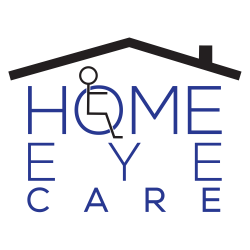
When you first get diagnosed with short sightedness or long sightedness your optician will recommend you wear prescription glasses. As well as the glasses your optician will explain to you all the various types of lenses and coatings available for your spectacles. It is very easy to get lost in all the jargon so we at Home Eyecare have created this simple guide to aid you when purchasing your glasses to make the correct choice for your needs.
Lenses
There are numerous types of lenses that an optician will prescribe depending on the needs of your eyes:
1. Single Vision
These are the most common type of prescription lens prescribed for your sight. These lenses have a single prescription strength over the whole lens and are used to correct sight at one distance only. They are prescribed for long sightedness (examples include reading or driving) or short sightedness where you need to see objects at a distance.
2. Bifocals
Bifocal lenses as the name suggests can do two things like distance and near or distance and computer. They have a line on the lens that demarcates the two powers. One area of the lens will have one prescription usually for distant vision and the lower area of the lens will have the other segment of the prescription usually for near vision. The advantage of bifocal lens is that it saves you from buying two pairs of glasses due to the fact that it combines all your vision needs in one pair of glasses. The upper part of the glasses can be used for seeing objects at a distance and lower part for reading. Bifocals are common as you age.
3. Varifocals and Trifocals
These lenses have more than three parts on the lens but have no line. The top part of the lens is used to see things that are at a far distance. The middle of the lens is for arms length or computer screen distance and the bottom part of the lens is used for near vision like reading. These lenses combine all your vision needs and usually work by changing the strength of the lens from top to bottom.
4. Office Lens (Degressives)
These lenses have no line across them like a varifocal but are used in an office environment.
The top part of the lens is for looking at computer screens or across the room and the bottom part is for reading. In between you can see distances between office wall/computer and closer reading.
Coatings
Coating your lenses helps to protect, improve and enhance the appearance of your glasses. There are various coatings each with a different use that are available for your lenses. Here are the main three that you should be aware of:
1. Ultraviolet (UV) Coating
UV coating involves using a dye on the lens that stops the exposure of harmful UV rays. Excess exposure to UV light can cause eye problems such as cataracts.
2. Anti Scratch Coating
There is no such thing as scratch proof but lenses can be treated front and back with a protective coating which hardens the surface of the lens making them more durable if they are dropped on the floor.
3. Anti Reflection (AR) Coating
A thin layered coating is applied to the lens to eliminate reflection from the front and the back of the lenses. Having AR coating eradicates the glare from reflecting light, this benefits your vision during night driving and provides improved vision for reading and computer use. Due to the AR coating people actually see your eyes rather than the reflection off the lenses.
Our optician will guide you on what lenses and coatings are suitable for your needs. Contact us today to talk to our friendly team.


No comments yet.